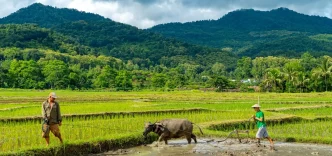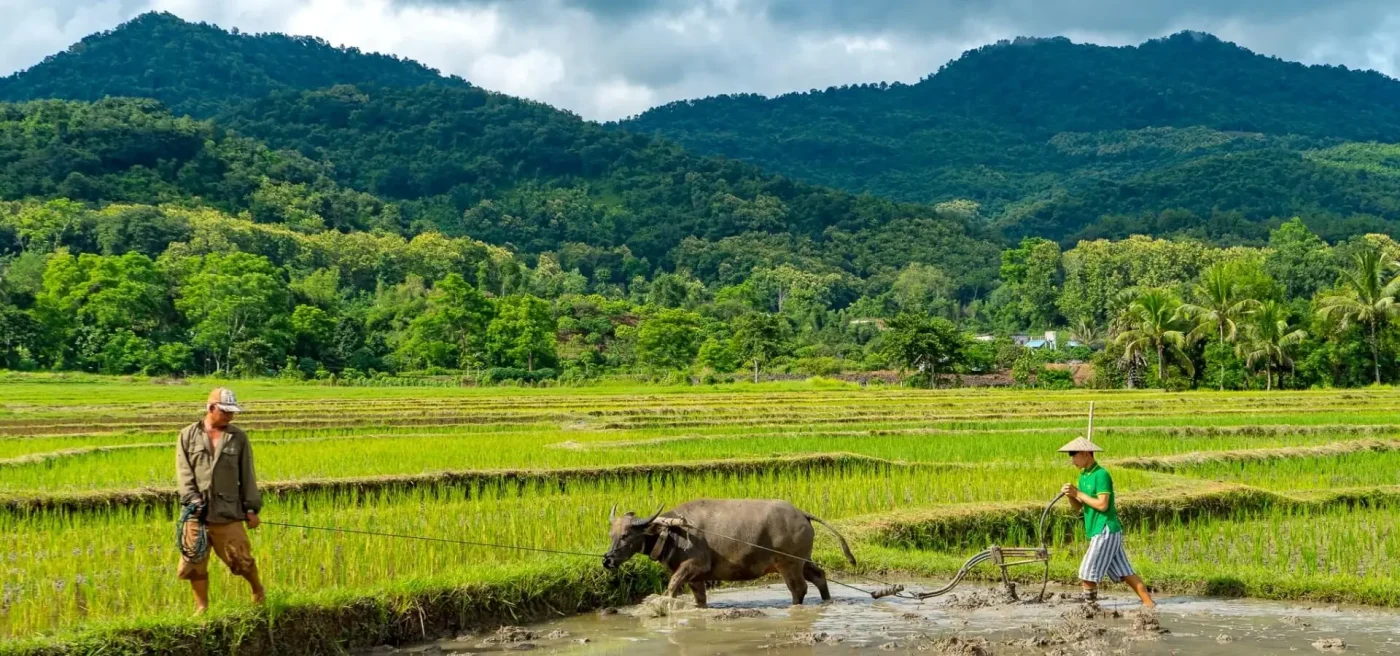In Laos, a nation long aspiring to become the “Battery of Southeast Asia” through its vast hydropower potential, a sharp rise in electricity prices is casting a shadow over households and businesses alike. The Vientiane government’s recent announcement of incremental rate hikes through 2029 has sparked widespread concern, as citizens grapple with bills that have surged by nearly 50% in some cases. With the Lao kip depreciating rapidly and foreign debt burdens mounting, the cost of powering the country’s ambitions is increasingly being passed on to its people.
Electricity Bills Shock Households
Across social media platforms, Lao citizens have voiced their dismay at the escalating cost of electricity. Photos of monthly bills have gone viral, with one widely shared post highlighting a staggering increase to 2.7 million kip (US$125) for April alone. This figure, while modest by international standards, represents a significant burden in a country where the average monthly income hovers around US$200 for many households. The outcry reflects a broader anxiety about affordability as the government pushes forward with its pricing reforms.
In February, Vientiane unveiled a plan to raise electricity tariffs progressively over the next five years. By December 2026, household rates are expected to reach 1,724 kip per kilowatt-hour (US$0.08), nearly double the rate from January 2025. This steep climb is tied to the nation’s growing energy demands, fueled by rising ownership of air conditioners and other appliances, as well as a burgeoning business sector. By the end of 2024, Laos had recorded approximately 21,300 registered companies—the highest in a decade—adding further pressure to the national grid.
Hydropower Ambitions and Debt Challenges
Laos generates about 70% of its electricity from hydropower, a resource that has positioned it as a potential energy exporter in the region. Major projects, often backed by foreign investment from countries like China and Thailand, have transformed the Mekong River and its tributaries into a network of dams. However, much of this infrastructure has been financed through loans, and the weakening kip—down more than 10% year-on-year to 660 per Thai baht as of late May 2025—has inflated the cost of servicing this debt.
The currency’s decline, which saw it fall from under 580 baht per kip in May 2024, has compounded the financial strain on state-owned utility Electricité du Laos (EDL). Unable to absorb the rising costs alone, the government has shifted a portion of the burden onto consumers through tariff hikes. This move, while fiscally pragmatic, risks alienating a population already grappling with inflation and limited wage growth.
Analysts suggest that without structural reforms or debt restructuring, Laos may struggle to balance its energy ambitions with economic stability. “The hydropower sector is a double-edged sword for Laos” said Dr. Somchai Vongsa, an economist based in Bangkok. “It offers immense potential for revenue through exports, but the debt tied to these projects is a ticking time bomb if the kip continues to slide.”
Economic Ripple Effects
The electricity rate hikes are not occurring in isolation; they are part of a broader economic challenge facing Laos. The country’s reliance on foreign loans for infrastructure development extends beyond hydropower to roads, railways, and urban projects, many of which are linked to China’s Belt and Road Initiative. While these investments have spurred growth, they have also left Laos vulnerable to external shocks, particularly currency fluctuations and rising interest rates on international debt.
For small businesses, the increased cost of electricity threatens to erode already thin profit margins. In Vientiane’s bustling markets, vendors who rely on refrigeration and lighting are feeling the pinch. “We can’t raise prices too much because customers won’t buy” said Khampheng Souvannavong, a shopkeeper in the capital. “But with electricity bills going up, it’s hard to keep the business running.”
Larger enterprises, particularly in manufacturing and hospitality, face similar dilemmas. The tourism sector, a key driver of foreign exchange earnings, is still recovering from global disruptions, and higher operational costs could deter investment in hotels and guesthouses. Meanwhile, factories producing goods for export to Thailand and Vietnam may find their competitiveness undermined by rising energy expenses.
Government’s Long-Term Vision
The Vientiane administration defends the rate hikes as a necessary step to ensure the sustainability of the energy sector. Officials argue that the increases will fund maintenance of existing dams, expansion of the grid to rural areas, and repayment of loans that have underpinned the country’s hydropower boom. They also point to plans for exporting surplus electricity to neighboring countries, which could generate revenue to offset domestic costs in the long run.
However, public trust in these promises appears to be waning. On platforms like X, sentiment among Lao users ranges from frustration to resignation, with many questioning why the benefits of hydropower exports are not translating into lower bills at home. “We have so many dams, but we pay more every year” wrote one user in a post that garnered hundreds of shares. “Where is the money going?”
The government has yet to announce specific measures to cushion the impact on low-income households, though discussions of subsidies or tiered pricing—where heavier users pay more—have surfaced in local media. Without such interventions, the risk of social discontent could grow, particularly in urban centers like Vientiane and Luang Prabang, where electricity consumption is highest.
Regional Context and Comparisons
Laos is not alone in facing energy cost challenges. Across Southeast Asia, countries are grappling with the dual pressures of rising demand and climate-driven transitions. Thailand, a key buyer of Lao electricity, has also seen domestic debates over energy pricing, though its more diversified economy provides a buffer that Laos lacks. Vietnam, another neighbor, is investing heavily in renewables to reduce reliance on imported power, a strategy Laos might consider if it can secure affordable financing.
Yet Laos’ unique dependence on hydropower—coupled with its landlocked geography and limited industrial base—sets it apart. The nation’s vision of becoming the “Battery of Southeast Asia” hinges on selling electricity to wealthier neighbors, but this ambition may falter if domestic stability is undermined by unaffordable energy at home. Regional cooperation, such as joint ventures on grid connectivity or debt relief initiatives, could offer a lifeline, though negotiations on such matters often move slowly.
Looking Ahead: Balancing Growth and Affordability
As Laos navigates this turbulent economic landscape, the electricity rate hikes serve as a stark reminder of the trade-offs inherent in rapid development. The government’s push to modernize and industrialize, while commendable, must be matched by policies that shield vulnerable citizens from the fallout of global financial pressures. Without targeted support—whether through subsidies, debt restructuring, or currency stabilization—the dream of becoming a regional energy powerhouse could come at a steep social cost.
For now, households and businesses in Vientiane and beyond are left to adapt to the new reality of higher bills. As the kip’s value fluctuates and the tariff hikes roll out, the resilience of the Lao people will be tested. Whether the government can harness its hydropower wealth to deliver equitable growth remains an open question, one that will shape the nation’s trajectory in the years to come.















